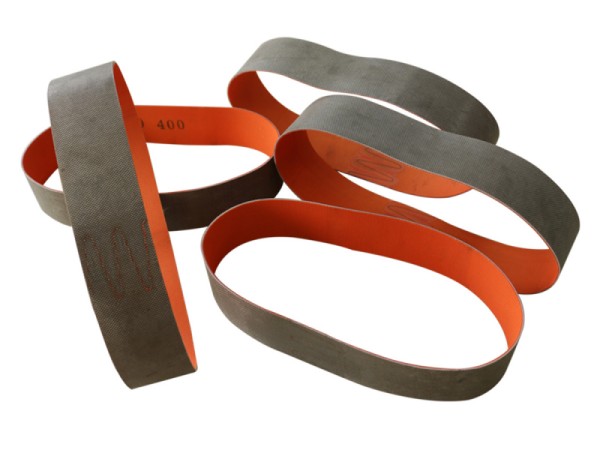Belt sanders are an essential part of various industrial and woodworking operations, helping to smooth and shape materials with precision and efficiency. However, the occurrence of left-to-right rocking of the sanding belt hinders the efficiency of the machine and affects the quality of the sanding process. To solve this problem, the root cause of belt wobble must be determined and appropriate solutions implemented to ensure optimal performance and output quality.

Sanding belt status problem
1. One of the main reasons why the sanding belt wobbles is that the sanding belt is uneven.
When the sanding belt lacks uniformity, it results in erratic and erratic movement during operation. In this case, the following solutions can be implemented to mitigate the issue:
- Replace with a new sanding belt: Replacing an uneven sanding belt with a new, correctly aligned sanding belt can eliminate the wobble caused by the irregularities in the original sanding belt.
- Straighten the sanding belt and readjust the tension: Making sure the sanding belt is taut and adjusting the tension to achieve an even flatness will effectively stabilize the sanding belt and reduce wobble, thereby enhancing the overall sanding process.
2. Severe and uneven wear on the sanding belt can lead to rocking phenomena, further affecting the performance of the machine. To solve this problem, you can take the following methods:
- Replace a new sanding belt: Replacing a worn, uneven sanding belt with a new one can correct the shaking caused by severe wear, thereby restoring stability and enhancing the functionality of the sander.
- Readjust Belt Tension: Fine-tuning sanding belt tension to ensure evenness and consistency can lessen the effects of severe and uneven wear, promote smoother operation, and improve sanding results.
Identifying and Solving Bearing Problems
The core problem of the belt sander bearing problem is the irregular swing of the sanding belt, which brings challenges to the operator and affects the smoothness and accuracy of the sanding process. To effectively address this issue, the following actions must be taken:
1.Bearing Condition Inspection: Operators are advised to thoroughly inspect the bearing condition. This includes assessing whether the bearings are loose, damaged, or showing signs of wear. Regular inspections can help detect potential bearing problems early and prevent further complications in sander operation.
2.Replace Bearings: Once a bearing is discovered to be loose, damaged, or worn, the most effective solution is to replace the affected bearing with a new, functioning bearing. This ensures stability and balance are restored within the belt sander, mitigating belt wobble and promoting uninterrupted and precise sanding operations.
Solutions to Tension Issues
Proper tension in a belt sander is critical to its efficient operation, and incorrect tension can cause damaging wobbles in the belt during use. To resolve sand belt tension issues, experts recommend the following solutions to restore optimal function:
1.Readjust the sanding belt tension: When the sanding belt shakes due to insufficient tension, it is crucial to readjust the sanding belt tension. This includes carefully adjusting the tension to meet the manufacturer’s recommended specifications, and ensuring the belt runs smoothly and consistently without erratic movement.
2.Verify Tension Adjuster Function: An important step in troubleshooting belt sander tension-related issues is to check the tension adjuster. Ensuring the tension adjuster is working properly is critical to maintaining the proper belt tension levels and avoiding instability and wobble issues during use.
Other Problems and Solutions
In addition to the typical causes, two other issues that can cause an unstable sanding belt are a failed belt sander motor and a loose pulley or drive belt.
A faulty motor can disrupt the smooth operation of your sander, while a loose pulley or drive belt can cause erratic sanding belt motion. These problems require individualized solutions because solving them requires careful examination of the specific situation.
Belt sanders that experience motor failure may require professional repair or replacement. Likewise, tightening or replacing a loose pulley or drive belt can help restore abrasive belt stability. Given these additional issues, users must remain vigilant and thorough when diagnosing abrasive belt problems. By taking a case-by-case approach and seeking expert help when needed, individuals can ensure the efficient and safe operation of their grinding equipment.
Conclusion
In short, the key to solving the problem of sander belt vibration is to identify the specific problem and find the root cause. By taking a methodical approach and systematically addressing each potential issue, owners can effectively resolve wobble issues and ensure the smooth operation of their belt sanders. Therefore, focusing on identifying and correcting the root causes of belt chatter is critical to achieving stability and efficiency in machine performance.
Post time: Dec-15-2023
